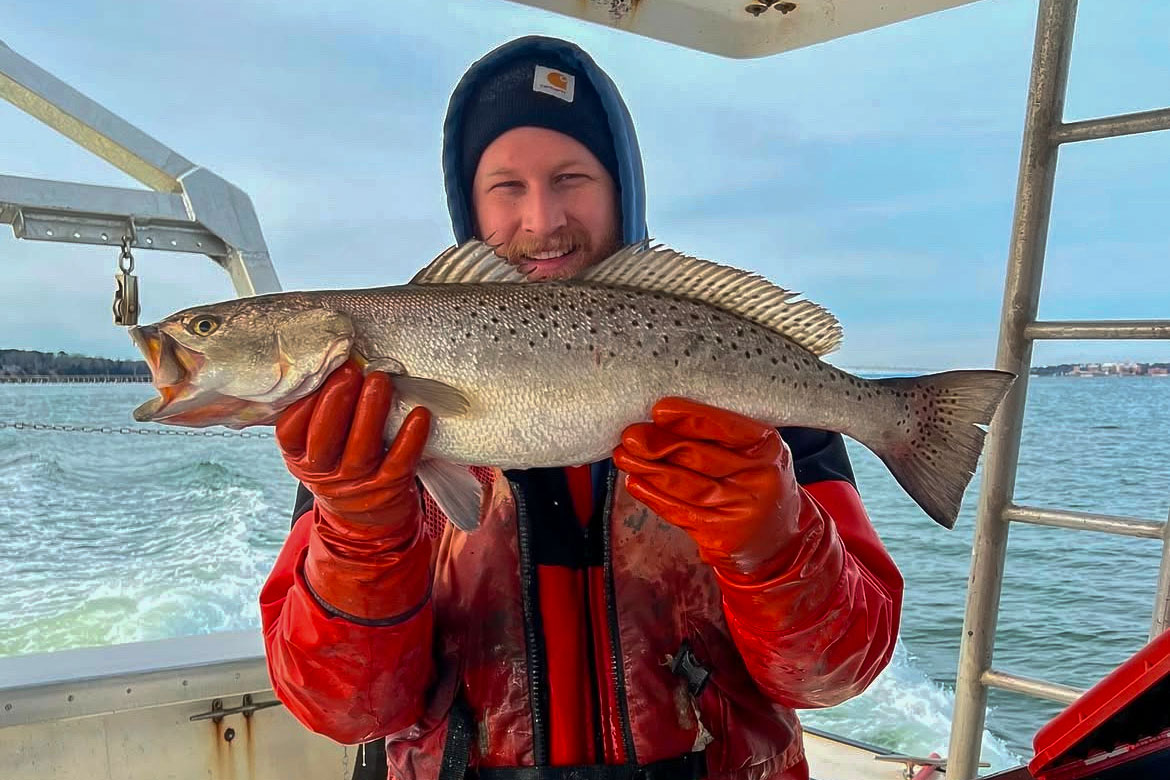Daniel Royster: A policy framework for bringing American Shad back to the James River
 Daniel Royster M.A. ’25 is no stranger to Virginia’s waterways. Growing up in Chesapeake, Royster developed an early love for the outdoors that would eventually shape his academic and professional journey. After earning his undergraduate degree in biology with a concentration in marine biology from Old Dominion University, Royster began volunteering in research labs—experiences that soon led him to a part-time position at William & Mary’s Batten School & VIMS in 2019.
Daniel Royster M.A. ’25 is no stranger to Virginia’s waterways. Growing up in Chesapeake, Royster developed an early love for the outdoors that would eventually shape his academic and professional journey. After earning his undergraduate degree in biology with a concentration in marine biology from Old Dominion University, Royster began volunteering in research labs—experiences that soon led him to a part-time position at William & Mary’s Batten School & VIMS in 2019.
That job, focused on juvenile striped bass recruitment, marked the beginning of a deepening relationship with the Batten School of Coastal & Marine Sciences & VIMS. By 2020, Royster was working full-time on juvenile recruitment surveys. Yet even while immersed in fieldwork, he began to consider his long-term goals.
“I knew I wasn’t going to be an academic, and I wanted to transition into more of a nine-to-five professional role,” said Royster. That realization brought him to the M.A. program at the Batten School & VIMS, an alternative to the more research-intensive M.S. route.
With guidance from his advisor, Professor and Chair Eric Hilton, Royster crafted a capstone project that aligned with his background in fisheries while branching into policy analysis. The research focused on the impacts of surface water withdrawals on the recovery of American Shad in the James River.
“The American Shad population in the James River is basically at zero,” Royster noted, citing years of fishery data that recorded either no catches or just a single fish.
Drawing from a policy framework originally developed by Hilton, Royster explored how withdrawals—especially by facilities using non-consumptive cooling systems—pose an under-acknowledged threat to anadromous species like the American Shad. While these withdrawals don't necessarily remove water permanently from the ecosystem, their intake mechanisms can entrain or impinge fish eggs, larvae and juvenile fish.
Among Royster’s key findings: surface water withdrawals in the James River basin are immense, approaching a billion gallons per day. “It’s not a secret, but, unless you're researching it, you would never know how much water is being pulled out,” he said.
Royster's work built upon previous modeling studies showing that while one intake might not have significant population-level impacts, multiple intakes operating together can have compounding effects on already-depleted fish stocks.
To mitigate these effects, Royster proposed several policy recommendations, including requiring all water withdrawal facilities—many of which are currently grandfathered in without permits—to adopt guidelines developed by the Department of Wildlife Resources. He also recommended stronger enforcement of closed-cycle cooling systems, seasonal reductions in water withdrawals during spawning runs, deconstructing Bosher Dam to improve fish passage, and reinitiating hatchery stocking, which was discontinued in 2017.
Royster emphasized the need for cumulative impact studies. “Doing them one at a time doesn’t show the whole picture. You need to model multiple intakes together to understand their true impact,” he said.
Beyond his academic work, Royster interned with the Virginia Marine Resources Commission (VMRC) in its Habitat Division. There, he gained firsthand experience with environmental permitting, which not only enriched his capstone but also helped him land a job. Following graduation, Royster accepted a position with the North Carolina Department of Environmental Quality, where he’ll continue working in environmental permitting and habitat conservation.
Reflecting on his time at the Batten School & VIMS, Royster credits the M.A. program's adaptability and mentorship for helping him navigate the intersection of science and policy. “It’s been a journey,” he said. “But I’ve learned that science doesn’t have to be in the lab or on a boat. It can be informing policy and making a difference that way, too.”

